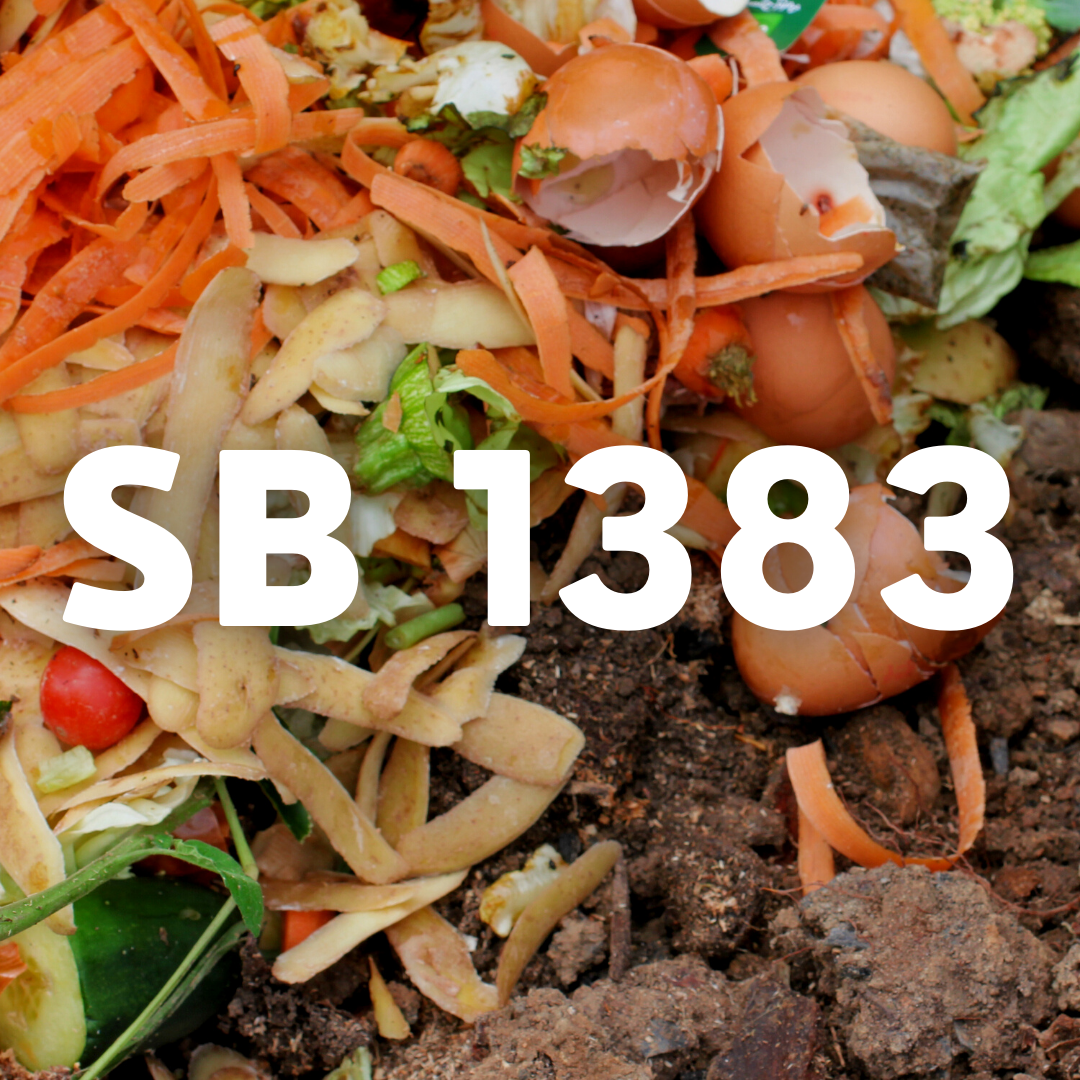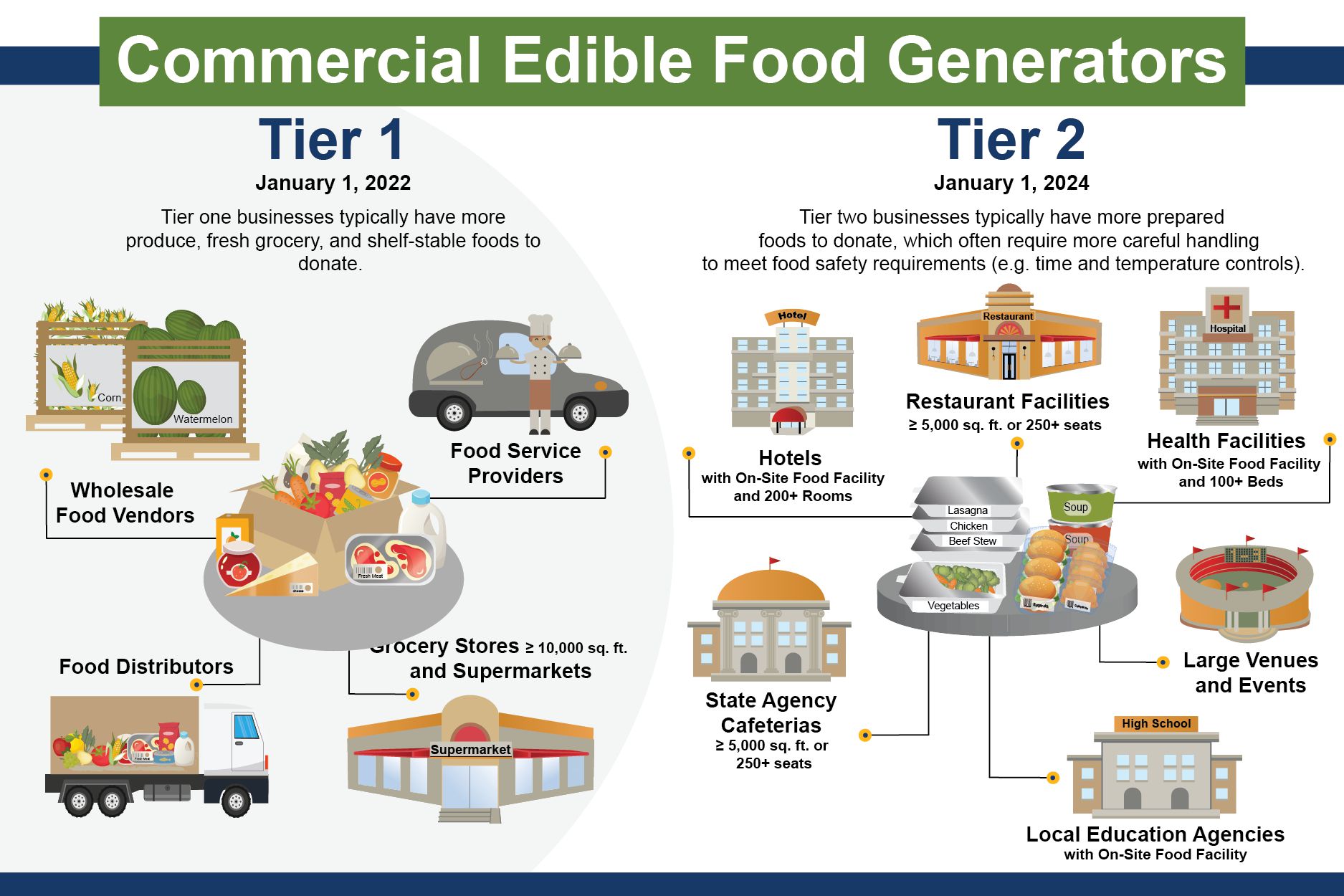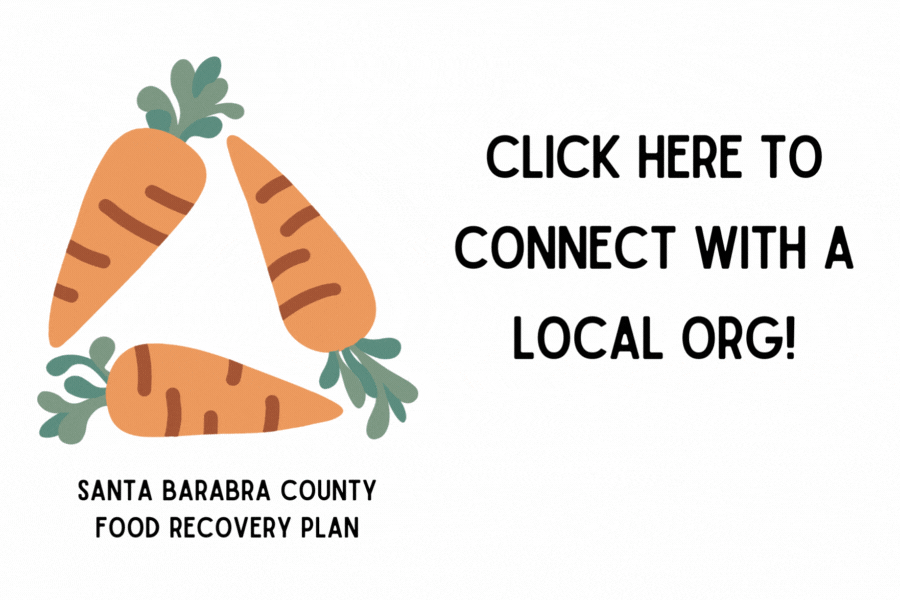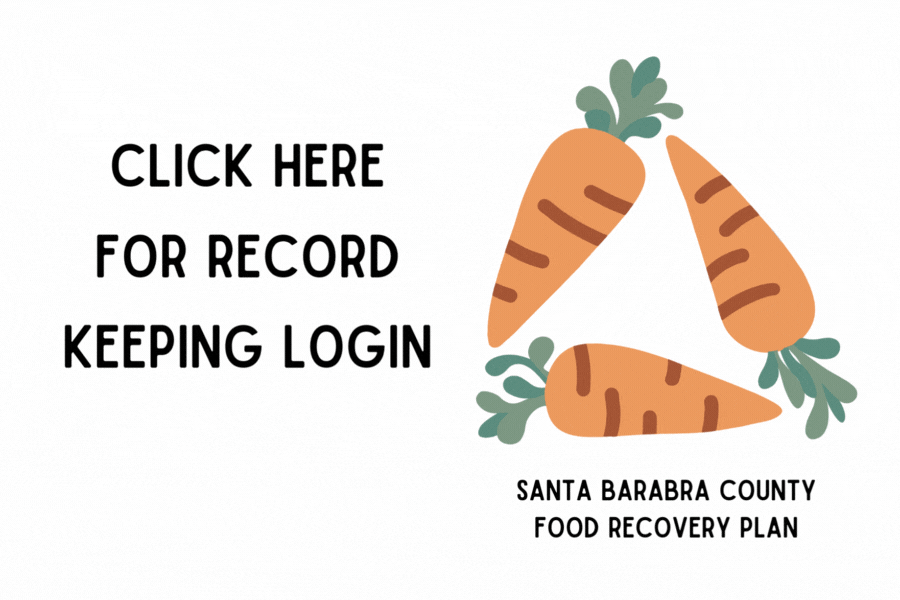
SB 1383 Edible Food Recovery
SB 1383 is a California bill aimed at reducing methane emissions through the increased recycling of organic waste. The regulations require a 50% reduction statewide in the disposal of organic waste by 2020 and a 75% reduction by 2025. Additionally, SB 1383 mandates that 20% of currently disposed edible food be recovered for human consumption by 2025.
Senate Bill 1383 (SB 1383) is legislation designed to keep organics out of the landfill. Part of this bill includes reducing edible food that goes to waste.

SB 1383 states that edible food waste generators must donate surplus food to food recovery organizations. Edible food waste generators are separated into two tiers, Tier 1 and Tier 2. Tier 1 generators must donate starting January 1, 2022, and Tier 2 generators must donate beginning January 1, 2024. Click here to learn more about what Santa Barbara County is doing to promote food recovery in our region. You do not need to be a Tier 1 or 2 business to donate! Help us keep all edible food out of the landfill and in the hands of people who need it. Find a map of food recovery organizations below. Once you enter the food donation portal, click on the "Donation Match Tool" to access the map. A list view is available here.
There are two requirements for edible food donors:
Establishing Contracts and Written Agreements with Food Recovery Organizations and Services
To ensure that the maximum amount of edible food is recovered, the regulations require that mandated food donors establish contracts or written agreements with food recovery organizations and services. Food recovery organizations and services vary in the amount and types of food they can receive, so mandated food donors may need to establish contracts or written agreements with multiple food recovery organizations and services to be in compliance.
Click here for a step-by-step guide on establishing a food recovery program for your business.
Recordkeeping
The law requires mandated food donors to maintain records on-site of their food donation activities. Jurisdictions will monitor compliance by requesting the following types of records:
- Contract or written agreement for food recovery organizations and services
- Schedules for food donation deliveries or collections
- Quantity of food donated in pounds per month
- Types of food each food recovery organization will receive or collect
FREE recordkeeping software is available for all businesses (regardless of Tier 1 or 2 status) and food recovery organizations. This tool can also be used for record keeping of other items such as meals provided or individuals served. E-mail Kaitlyn to set up a username and password.
We want to help! If you'd like to start donating food from your business. Check out our guide or email Kaitlyn Haberlin.
Food Recovery Tools:
- CalRecycle Written Agreement Template
- Recordkeeping Template Excel (Monthly & Individual Donations)
- Recordkeeping Template PDF (Monthly & Individual Donations)
- Food Weight Estimate Chart
- Donation Schedule Template
- Food Recovery Flyer
- Online Recordkeeping System FAQs
- CalRecycle Food Recovery Webpage
Schools & Food Recovery
K-12 schools are considered Tier 2 food generators and must meet the food donation requirements by 2024. Child Nutrition Programs are monitored by various governmental agencies and have separate waste reduction procedures to follow outside of SB 1383. Guidance from the California Department of Education can be found here:
Guidance on Donation of Leftover Food in CNPs - School Nutrition (CA Dept of Education)
Wondering how food recovery will be enforced?
- Santa Barbara County Public Health and your jurisdiction's solid waste representatives will be making at least annual inspections to your business to check for SB 1383 compliance which includes being on an organic waste collection program, having adequate signage (available for free from the County), and having an edible food donation procedure in place (for Tier 1 and Tier 2 businesses only). Please note that during our visits we are here to help and answer questions. We are also always available via email.
Related Materials
- Waste Reduction Tours
- ReSource Center Experience
- ReSource Center and Tajiguas Landfill Tours
- Food Donation
- Food Donations
- Food Expiration Guidelines
- Food Forward
- Food Waste Prevention
- Business Organic Waste Collection
- Home Composting
- Composting Workshops
- SB 1383 Edible Food Recovery
- Santa Barbara County Regional SB 1383 Food Recovery Plan
- SB 1383 Edible Food Recovery Tools
- Program Exemption Application
- Waste Reduction in Action!
- Local Education Agency Donation Information
Related Articles
-
New Food Forward Booklet Available!
August 21, 2019 by Sam Dickinson -
Bulk Food Storage During Quarantine
April 28, 2020 by Kaitlyn Haberlin -
Taking a Further Look at Food Waste
September 05, 2014 by Leslie Robinson - Organics -
World Food Day October 16
October 09, 2018 by Leslie Robinson - Organics -
County’s ReSource Center Is Helping Many Residents Recycle their Organics
January 20, 2022 by Kaitlyn Haberlin - Organics -
Composting Workshop at the Solvang Library!
May 19, 2022 by Mackie Forgey - Organics -
FREE Kitchen Pail Pick-Up!
November 04, 2022 by Sam Dickinson - Organics -
Meet Food Waste Freddie! Your Local Food Waste Hero.
April 10, 2024 by Sam Dickinson - Organics

